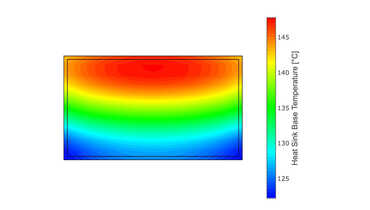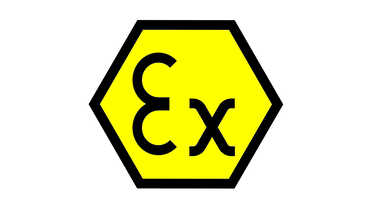Choosing the best Outdoor Touch Screen for your vending kiosk design demands a keen understanding of environmental impacts. We appreciate the complexities you face-balancing visibility and performance under direct sunlight is a significant challenge. At Interelectronix, we've dedicated ourselves to mastering these obstacles. If you're contemplating touch screens larger than 15.6 inches (396.24 mm), it's vital to consider the effects of solar load. Let's explore why smaller screens might be the optimal choice for your outdoor kiosks.
The Impact of Solar Load on Large Touch Screens
Understanding Solar Load
Solar load refers to the amount of solar energy absorbed by a surface when exposed to sunlight. For outdoor kiosks, this can lead to:
- Increased Internal Temperatures: Excessive heat buildup inside the kiosk.
- Component Degradation: Accelerated wear and tear on electronic parts.
- Display Issues: Reduced screen visibility and potential blackouts.
Surface Area and Solar Energy Absorption
Calculating Screen Surface Areas
Assuming a 16:9 aspect ratio:
15.6-inch Screen:
- Diagonal: 15.6 inches (396.24 mm)
- Width (W): ~13.6 inches (345 mm)
- Height (H): ~7.65 inches (194 mm)
- Surface Area (A): W x H = 0.0669 m2
23.8-inch Screen:
- Diagonal: 23.8 inches (604.52 mm)
- Width (W): ~20.75 inches (527 mm)
- Height (H): ~11.67 inches (296 mm)
- Surface Area (A): W x H = 0.156 m2
Solar Load Calculations
With an average solar irradiance of 1,000 W/m2:
15.6-inch Screen Solar Load:
- 0.0669 m2 x 1,000 W/m2 = 66.9 Watts
23.8-inch Screen Solar Load:
- 0.156m2 x 1,000 W/m2 = 156 Watts
Comparison Table with Percentage Increases
| Parameter | 15.6-inch Screen | 23.8-inch Screen | Percentage Increase |
|---|---|---|---|
| Surface Area (m2) | 0.0669 | 0.156 | 133% |
| Solar Load (Watts) | 66.9 | 156 | 133% |
Note: Percentage Increase calculated as ((Value 23.8 - Value 15.6) / Value 15.6) × 100%.
Combined Heat Load Including Backlight Heat
High-brightness screens essential for outdoor use consume additional power, contributing to heat generation.
Backlight Power Consumption
- 15.6-inch Screen: 25 Watts at 1200 nits brightness
- 23.8-inch Screen: 35 Watts at 1200 nits brightness
Total Heat Load
15.6-inch Screen Total Heat Load:
- 66.9 Watts (solar) + 25 Watts (backlight) = 91.9 Watts
23.8-inch Screen Total Heat Load:
- 156 Watts (solar) + 35 Watts (backlight) = 191 Watts
Comparison Table with Percentage Increases
| Parameter | 15.6-inch Screen | 23.8-inch Screen | Percentage Increase |
|---|---|---|---|
| Backlight Power (Watts) | 25 | 35 | 40% |
| Total Heat Load (Watts) | 91.9 | 191 | 108% |
Implications of Increased Solar Load
Overheating Risks
Component Failure: Excessive heat can cause electronic components to overheat and fail. High temperatures affect the reliability of integrated circuits, resistors, capacitors, and other vital parts. Overheating can lead to sudden malfunctions or gradual degradation, resulting in increased maintenance costs and potential downtime, which negatively impacts user experience and revenue generation.
Display Degradation: Prolonged exposure to high temperatures can diminish screen performance by reducing brightness and contrast levels. Liquid crystal displays (LCDs) and organic light-emitting diode (OLED) screens are particularly sensitive to heat, which can cause color distortion, image retention, or permanent pixel damage. This degradation compromises visibility, making the kiosk less user-friendly and potentially deterring customers.
Thermal Runaway: Inadequate heat dissipation can lead to a self-reinforcing cycle where increasing temperatures cause components to generate more heat, further elevating temperatures. This phenomenon, known as thermal runaway, can rapidly escalate and result in catastrophic failure of the kiosk's electronics. Preventing thermal runaway is crucial to ensure safety and maintain the operational integrity of the kiosk.
Cooling Challenges
Complex Cooling Systems: Larger screens generate more heat, often necessitating active cooling solutions like fans or heat sinks. These systems add complexity to the kiosk design and require additional space within the enclosure. They also introduce moving parts, which can be prone to failure in harsh outdoor environments, potentially compromising the kiosk's reliability.
Energy Consumption: Implementing cooling systems increases the overall power requirements of the kiosk. Fans, heat pumps, or air conditioning units consume significant energy, which not only raises operational costs but also strains power sources, especially in remote locations where power availability may be limited or dependent on solar panels and batteries.
Maintenance Needs: More complex cooling systems require regular maintenance to ensure they function correctly. Filters may need cleaning or replacement, and mechanical components like fans can wear out over time. This increases the maintenance burden and costs, and any failure in the cooling system can lead to overheating and subsequent kiosk downtime.
Advantages of Smaller Screens
Lower Heat Absorption: Smaller screens have less surface area exposed to sunlight, resulting in reduced solar energy absorption. This decrease in absorbed heat leads to lower internal temperatures within the kiosk, minimizing the risk of overheating. By maintaining cooler conditions, smaller screens help ensure that all components function optimally, even under intense sunlight.
Simpler Cooling Requirements: Due to their lower heat absorption, smaller screens often eliminate the need for complex cooling systems. Passive cooling methods, such as natural air circulation and heat dissipation through the kiosk's materials, are usually sufficient. This simplicity not only conserves energy but also reduces installation and maintenance costs associated with active cooling solutions like fans or cooling units.
Enhanced Reliability: Operating at lower temperatures significantly extends the lifespan of electronic components. Heat accelerates the degradation of electronics, leading to failures over time. By reducing thermal stress through the use of smaller screens, kiosks experience fewer temperature-related issues, resulting in improved reliability and decreased downtime for maintenance or repairs.
Why Interelectronix
Understanding the impact of solar load is essential when designing outdoor kiosks that perform reliably in all conditions. At Interelectronix, we specialize in creating solutions that effectively manage solar heat gain. We're here to help you make informed decisions that enhance the performance and durability of your kiosks. Contact us today, and let's collaborate to bring your project to life with the optimal touch screen solutions.




